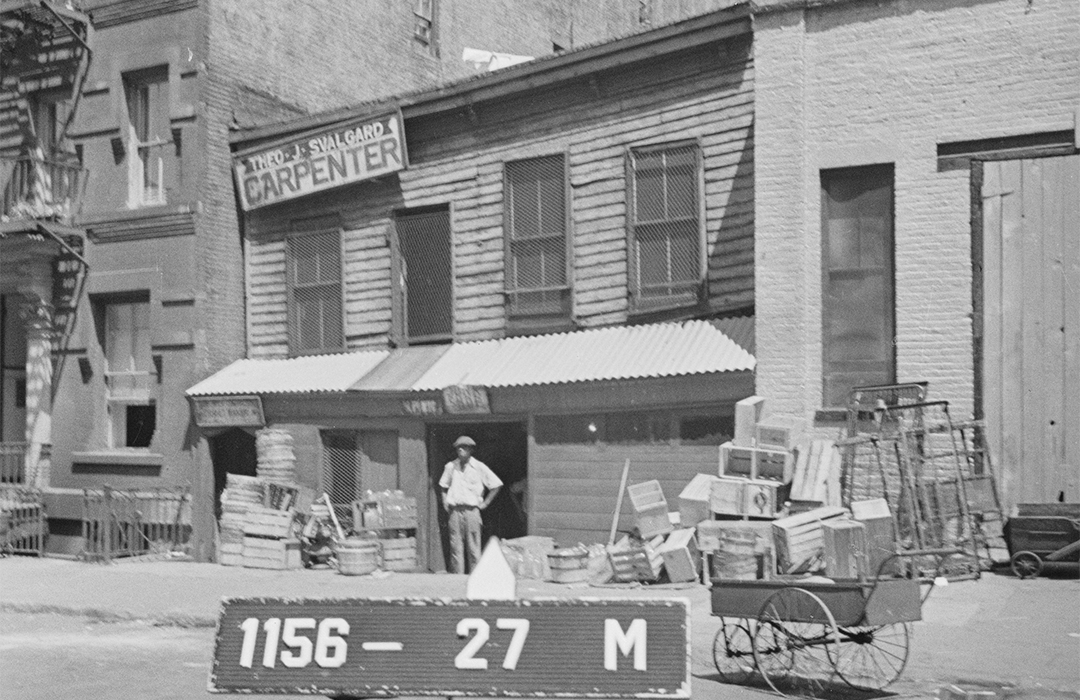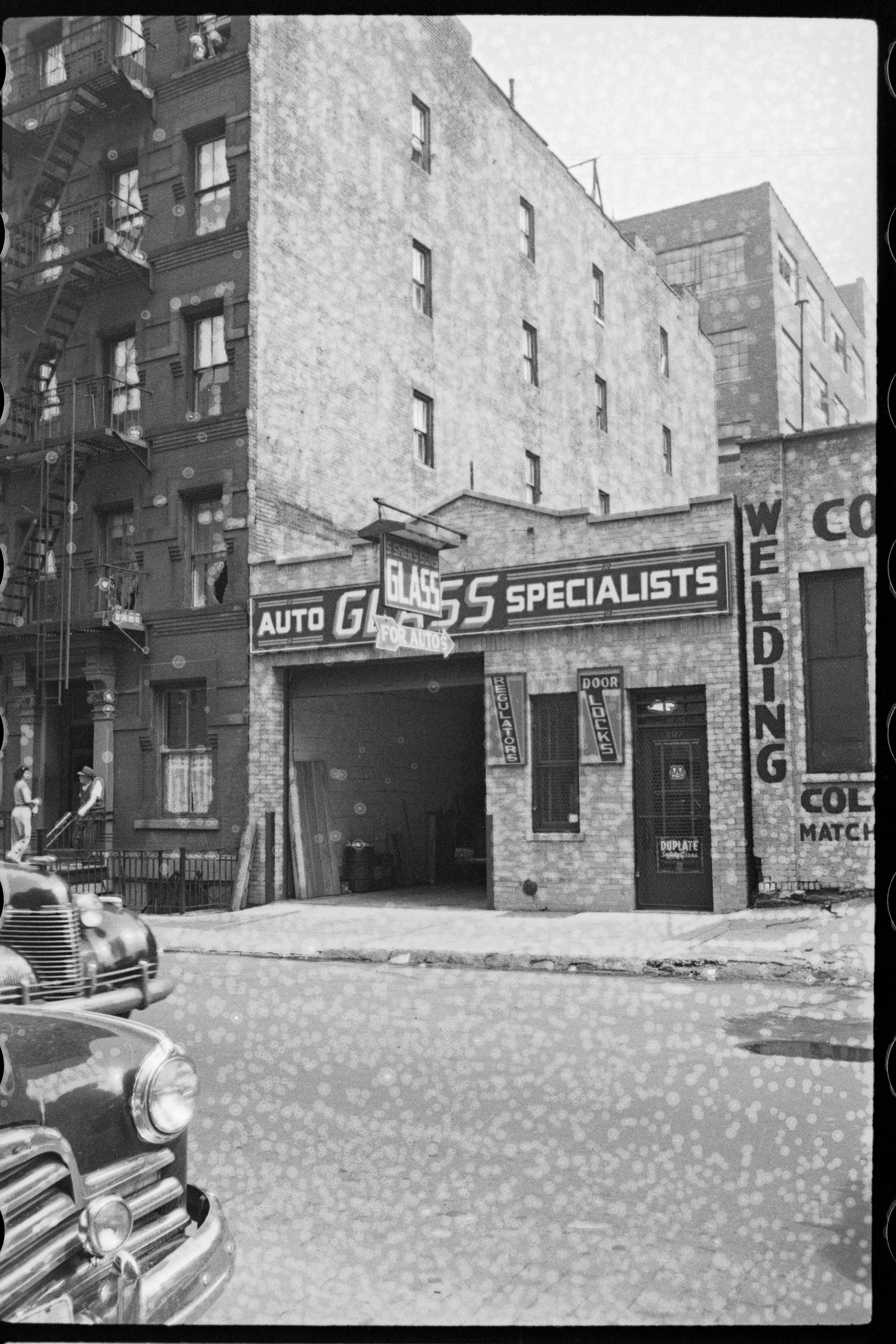
207 West 64th Street
by Tom Miller
Anastasia Cashman lived in the two-story wooden house at 207 West 64th Street in 1891 when her impoverished, gritty neighborhood known as San Juan Hill caught the attention of the Children’s Aid Society. On February 23, 1892, The New York Times reported, “the Sixteenth Ward school, for so many years at 211 West Eighteenth Street, has been discontinued in order to remove to a crowded tenement district, where there is greater need of its labors than in West Eighteenth Street.” Anastasia Cashman had leased her house to the society. The article said,
A most successful school has been established at 207 West Sixty-fourth Street, west of Tenth Avenue. It was found that many of the younger children of that neighborhood were entirely neglected, having never attended any school or received any kind of instruction or care. The school is supported by Dr. and Mrs. A. Blair Thaw, and is accomplishing a work which cannot be measured. Industrial and evening classes have also been formed, and every effort is taken to make this school an influence for higher and better things in the neighborhood.
Called the Sixty-fourth Street School, it had a slow start. The society’s 1893 report lamented, “It was a sad sight to see so many children between the ages of five and twelve not attending school, most of them never having been in school. When the question was asked, ‘Why are your children not in school?’ the answer invariably was, ‘There is no school for them.’”
Children who did come to class came hungry and teachers routinely gave food not only to them, but their families.
Teachers visited the tenements and hovels in the neighborhood four days per week hoping to convince parents to send their children to the school. The report said, “In reviewing the past year, we can say with great satisfaction that the work has not been a failure, and that the school is located just where it is most needed.”
But the grim environment of San Juan Hill put schooling low on families’ priorities. Children who did come to class came hungry and teachers routinely gave food not only to them, but their families. “In three cases the families would have starved had not timely aid been given,” said the report.
The school offered more than the simple fundamentals taught in public schools. Girls learned sewing—a valuable skill—and boys learned trades like woodworking.
The conditions of the San Juan Hill neighborhood were starkly evidenced on June 31, 1895. An irate reader wrote to The Evening World complaining that on the day before, “an officer was stationed at every door, but Monday when murder was going on in front of the school-house, 207 West Sixty-fourth street, at 10 A.M., only four blocks from the station-house, not an officer was in sight, although the street was crowded with people screaming ‘murder’ at the top of their voices, making noise enough to wake the dead. Still no officer came.”
The Sixty-fourth Street School moved to a new building at the end of 1895. Its former home became the headquarters of the Colored Republicans of the Nineteenth Assembly District. A large political meeting was held there on the night of October 20 that year, with speeches by six of its leaders. But speeches were not the only activities going on here. During an investigation on police corruption in May 1899, two witnesses provided a list “of the poolrooms and gambling houses they had found in operation since April 7,” according to The Sun. Listed under “gambling houses” was 207 West 64th Street.
‘although the street was crowded with people screaming ‘murder’ at the top of their voices…no officer came.’
For some time afterward, the wooden building was operated as a barber shop. Then, in 1913, Charles Gier leased it, the building next door at 205 West 64th Street, and the two abutting properties behind at 206 and 208 West 65th Street. On September 2 that year, The Horseless Age reported, “he intends to make extensive alterations, converting the whole into a modern fireproof garage.”
If Gier intended to renovate the four buildings, he never got around to it. When the estate of James H. Brush renewed his lease on all four properties a decade later, nothing had been done. By the time Danish-born Theo Svalbard leased 207 West 64th Street around 1938 for his carpentry store, it was in dilapidated condition. Noticeably sagging, its second story windows were exaggeratedly off plumb. A ramshackle, one-story extension in front sat under a corrugated metal roof. The end of the line for the little wooden building was near.
It was demolished in 1945 and replaced by a store building which, along with its neighbors, was razed in 1961 to make way for the Fiorello H. LaGuardia High School of Music & Art.
Tom Miller is a social historian and blogger at daytoninmanhattan.blogspot.com



